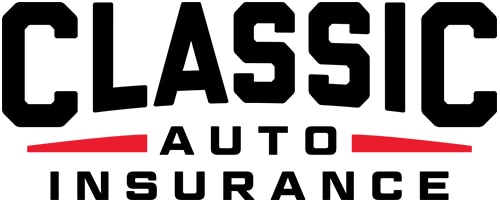This Supercharged 1937 Cord 812 Was Decades Ahead of Its Time! Worldwide Auctioneers
Recently, our motor enthusiasts at Classic Auto Insurance had the pleasure of viewing a stunning and revolutionary classic car: the 1937 Cord 812 Supercharged Cabriolet. Elliott Alvis, an enthusiastic and knowledgeable gearhead from Worldwide Auctioneers, showcased this remarkable Cord Cabriolet at the Enthusiast Auction in Auburn, Indiana.
Fittingly, Cord and the Auburn Automobile Company manufactured this vehicle in Indiana, producing one of the most powerful and innovative cars of the 1930s. While the Cord 812 isn’t a household name, it’s a much-adored vehicle among classic and vintage car enthusiasts, and it pioneered advancements that didn’t become popular until nearly five decades later.
Here’s what you need to know about this entry in automotive history, including its development and exceptional specifications.
The History of the Cord 810/812 Cabriolet
The history of the Cord 812 began with business tycoon Errett Lobban Cord. Cord had an immensely successful career in the automotive industry selling vehicles. He was so successful that the owners of Auburn Automobile asked him to run their company.
E.L. Cord took over operations at Auburn Automobile, and he showed a special interest in enhancing the brand’s aesthetic appeal. He was largely successful in elevating the Auburn brand’s styling, making the brand’s vehicles some of the most attractive cars in Indiana, including the Auburn Speedster.
Cord used his success at Auburn to launch the Cord luxury brand and the Cord Corporation, a holding company that controlled numerous transportation companies, such as Lycoming engines and Duesenberg. Under the Cord marque, he released the highly innovative 1929 Cord L-29, a crucial precursor to the Cord 810/812. Unfortunately, Cord and Auburn suffered financially after the car’s release due to the onset of the Great Depression, leading them to halt production of the L-29 in 1932.
Four years later, E.L. Cord attempted to revitalize the Cord luxury brand with the Cord 810/812 models. These stunning cars took great inspiration from Cord’s sister brand, Duesenberg. Cord aimed to create a smaller, more powerful version of the Duesenberg Model J, even having Duesenberg’s chief body designer, Gordon Buehrig, design Cord’s new flagship model.
While the Cord 810 and 812 were innovative and well-received, Cord and its sister brands continued suffering financially amidst the Great Depression. Shortly after the release of the 1937 Cord 812, the Auburn, Cord, and Duesenberg brands became defunct. That same year, E.L. Cord sold the Cord Corporation and retired.
Although his time spearheading automotive projects was short, E.L. Cord made a lasting impact with the Cord L-29, Auburn Speedster, Duesenberg Model J, and the Cord 810/812 Cabriolet.
The Cord Cabriolet’s Stunning Exterior
The 1937 Cord 812 Supercharged Cabriolet features an all-steel body that was constructed by the Central Manufacturing Company in Connersville, Indiana. The coachbuilder equipped the unibody construction with a stub-type subframe to hold the car’s incredible powertrain.
Perhaps the first thing you’ll notice about the car’s eye-catching body is its rear-hinged “coffin nose” hood, which was inspired by the Duesenberg Model J. It also boasts stylish, futuristic-looking exhaust pipes connecting its hood and fenders. The 812 Cabriolet also displays impressive styling choices beneath the surface, riding on wide whitewall bias-ply tires featuring chrome wheel covers and beauty rings.
In addition to these style choices, the Cord’s exterior features one of its most novel innovations: pop-up headlights operated manually with a crank. The Cord Cabriolet holds the title of being the first car to feature concealed headlights, which didn’t become popular in the automotive industry until the 1970s. This innovation alone distinguishes the Cord Cabriolet as an essential part of motor history, but it also features other advancements.
The 1937 Cord 812 Supercharged Cabriolet Is a Powerhouse of Innovation
The Cord brand’s most important innovation was the introduction of front-wheel drive. While other automakers had experimented with front-wheel drives, they were largely unsuccessful, and the Cord Corporation’s 1929 L-29 holds the title of America’s first front-drive car.
In reality, E.L. Cord and his team didn’t develop this system on their own. Cord drew inspiration from Harry Miller, an American race car developer. Cord purchased the patent rights to the front-wheel system from the racecar driver, and Miller’s shop even created a prototype for Cord’s L-29.
A few years later, the Cord Corporation made the front-wheel drive all the more impressive with the 1937 812 Cabriolet by equipping it with an innovative supercharged engine. This historic powerhouse runs on a Supercharged Lycoming 288.64 cu in V8 engine with a single 2-barrel carburetor. Cord paired this engine with a Detroit Gear T2971 4-speed manual transmission, which sent power to its front wheels through a spiral bevel differential equipped with semi-floating drive axles and a 4.7:1 gear ratio.
This incredible engine made the 1937 Cord 812 Supercharged Cabriolet one of the fastest vehicles in the world. While most cars from this period struggled to achieve 45 miles per hour, the 812 Cabriolet could clock 100 mph with no problem, a truly astounding feat for the 1930s.
In addition to its unbelievable powertrain, the Cord Cabriolet featured Bendix 11-inch hydraulic brake drums at all four wheels, enhancing the car’s handling and driveability.
The Cord Cabriolet Cabin and Incredible Pre-Selector Shifter
When you take a look inside the Cord Cabriolet, you’ll see its elegant machine-turned dashboard with a clock and AM radio. You’ll also see an advanced instrument cluster with a 5,000 RPM tachometer, 150 mph speedometer, and various gauges.
In addition to these commonplace features, the Cord sports a highly sophisticated shifter that’s ahead of its time. Rather than offering a standard three-foot shifter, the 812 Cabriolet boasts a subtle column-mounted H-pattern shifter that adjusts the pre-selector transmission. The pre-selector transmission allows the driver to choose their desired gear in advance. When they engage the clutch, the system executes the shift through an internal mechanism, completing the gear change as the clutch is released.
Elliott Alvis observed that the car’s advanced pre-selector shifter and transmission are similar to the F1 transmission setup that Ferraris had in the early 2000s.
Can you believe that a car from the 1930s features such a modern innovation?
Legacy of the 1937 Cord 812 Supercharged Cabriolet
The Cord 812 Supercharged Cabriolet is an essential entry in motor history, as it introduced critical innovations that were advanced for the 1930s. Sadly, Cord and the Auburn Automobile Company only constructed the 810/812 Cabriolets in 1936 and 1937 due to their financial difficulties, creating just 2,992 units. Today, only an estimated 1,800 remain.
Due to their rarity, these vehicles often change hands for over $150,000 if they’re in good condition. The example we viewed at the 2025 Enthusiast Auction in Auburn sold for $307,500, a handsome sum for an iconic and revolutionary vehicle.
If you’re the proud owner of a Cord Cabriolet or another breathtaking classic, you need to safeguard your investment with the best insurance available.
Learn more about protecting your classic vehicle by contacting our team at 888-901-1338, or get an instant quote here.

